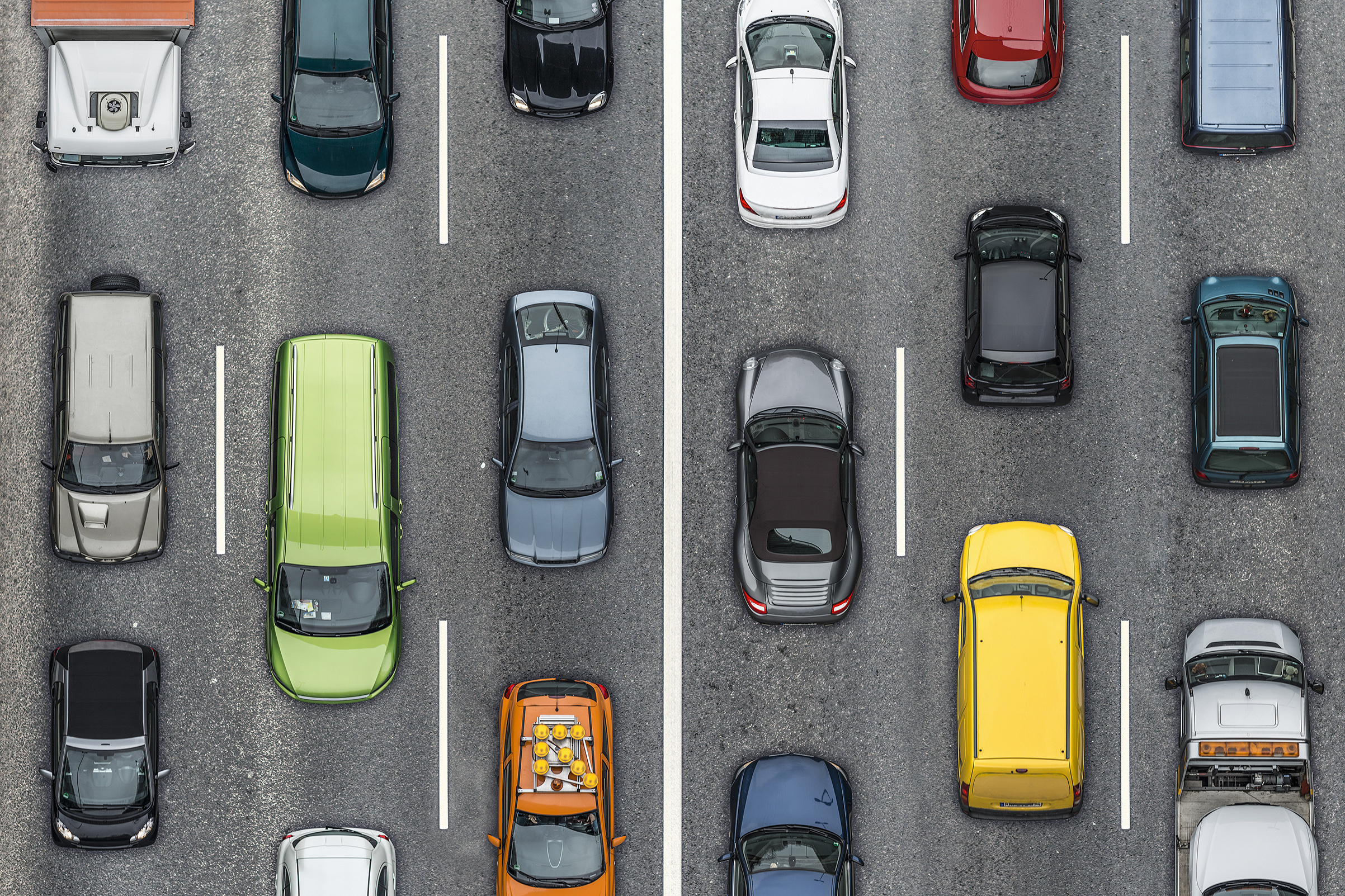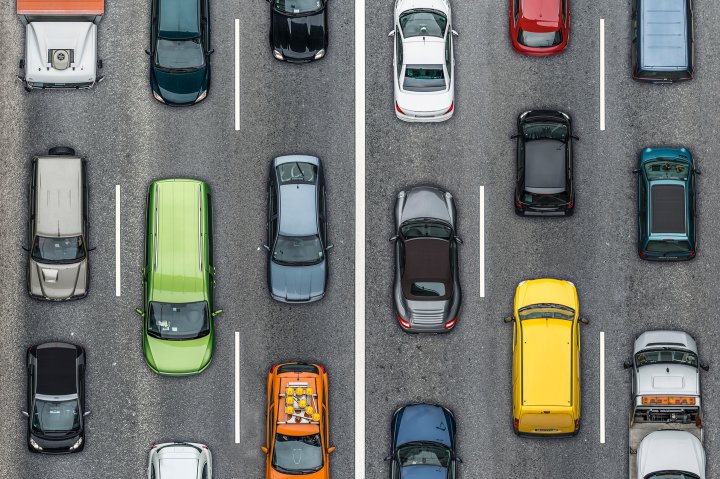<!-- wp:gutenberg-custom-blocks/featured-media {"id":5506225,"url":"https://api.time.com/wp-content/uploads/2019/01/artificial-intelligence-traffic-02.jpg","caption":"Traffic lights with artificial intelligence may be able to reduce gridlock","credit":"Getty Images"} -->

<!-- /wp:gutenberg-custom-blocks/featured-media --><!-- wp:paragraph -->
Almost everyone who’s ever been stuck in bumper-to-bumper traffic has, at one time or another, cursed the urban planner who failed to foresee their current plight. Self-driving cars promise to help alleviate the problem by reducing crashes and ensuring vehicles are operated at their maximally efficient speed and separation distance. However, truly autonomous vehicles, in which you’d be able to read the newspaper or binge watch your favorite shows from the driver’s seat, remain a far-flung dream. But what if we take a core technology underlying driverless cars — artificial intelligence — and apply it to traffic management, and more specifically, traffic lights themselves?
<!-- /wp:paragraph --><!-- wp:paragraph -->
The modern three-signal traffic light was created in 1920 by Detroit police officer William Potts, and the basic idea hasn’t changed much since then. Today, despite Silicon Valley’s quest to put AI in all the things, only three percent of all traffic lights in the United States are considered “smart,” according to Aleksandar Stevanovic, director of the Laboratory for Adaptive Traffic Operations & Management at Florida Atlantic University. Instead, the majority of traffic lights work on simple timers, programmed based on estimates of traffic flows at given times of the day.
<!-- /wp:paragraph --><!-- wp:paragraph -->
“Some of the old systems are still using outdated algorithms that use local knowledge,” says Stevanovic. “You’re not really going to look at the bigger picture.” A small number of traffic lights are connected to cameras, radar systems or sensors below the road, any of which can detect cars and trigger a light to turn from red to green. But even these systems have their flaws. They typically don’t accommodate pedestrians and cyclists, for instance, and inclement weather can interfere with their sensors.
<!-- /wp:paragraph --><!-- wp:paragraph -->
Building a smarter traffic light could bring benefits that go well beyond driver convenience. Idling cars are a major source of greenhouse emissions, generating an estimated 30 million tons of carbon dioxide annually, according to the U.S. Department of Energy. Traffic jams can also make it harder for first responders to reach an emergency, putting lives at risk. The answer to both problems could be AI — at least according to the team at Rapid Flow, the company behind Surtrac, an AI-based adaptive traffic management system.
<!-- /wp:paragraph --><!-- wp:paragraph -->
Spun out of a project led by Carnegie Mellon Institute researcher and Rapid Flow co-founder Stephen Smith, Surtrac uses a decentralized network of smart traffic lights equipped with radar, cameras, and other sensors to manage traffic flows. Surtrac’s sensors identify approaching vehicles, calculate their speed and trajectory, and adjust a traffic signal’s timing schedule as needed. A Surtrac-equipped intersection then distributes the timing and vehicle information it collects to other nearby “smart” intersections, which can use that information, along with their own data, to adjust their own signals. That allows traffic throughout the system to be managed in real time based on the volume that’s actually there, not the volume that’s only predicted to be there.
<!-- /wp:paragraph --><!-- wp:paragraph -->
The project launched in 2012 along a single-street corridor outfitted with nine Surtrac-equipped intersections in Pittsburgh’s East Liberty neighborhood. “Overall, if you average by volume, we were reducing travel time through the network by 25-26%,” says Smith of those early days. “Not so much because [cars] were moving faster, but because they were stopping 30% fewer times.” Surtrac tech is now found in 50 intersections throughout Pittsburgh; it’s expected to expand to between 150 and 200 intersections thanks to a grant recently awarded to the city. “When that’s complete, we’ll probably have a third of the city’s intersections, which is interesting because it creates a lot of other opportunities,” says Smith, including the ability to better account for non-vehicle traffic, like pedestrians and bicycles.
<!-- /wp:paragraph --><!-- wp:paragraph -->
Pedestrians with disabilities could see a particular benefit from smart traffic systems like Surtrac. With intersections outfitted with cameras, motion sensors and artificial intelligence software, people in wheelchairs or using other assistive devices could be detected before they arrive at a crosswalk, their travel time could be estimated, and the timing system could make sure they have the right of way. Others could see advantages, too. “In principle, if a pedestrian is running a few seconds behind or longer, we could hold the light longer to keep a bus there,” says Smith.
<!-- /wp:paragraph --><!-- wp:paragraph -->
Smart traffic systems could also prove more adaptable to abnormal situations like inclement weather. Rain and snow cause significant traffic slowdowns, and pre-programmed timed traffic lights typically don’t accommodate for that. Smart traffic management systems, however, could be fed weather data, or collect it themselves, and change their timing accordingly. They could also clear the way for emergency services by accelerating certain lanes of traffic or blocking cars from entering an intersection before first responders pass.
<!-- /wp:paragraph --><!-- wp:paragraph -->
Still, some people think an even more intelligent traffic management system could be created with a bit of outside-the-box thinking. For smart traffic management of an entire city — management that mitigates traffic jams and identifies hotspots for slowdowns — Stevanovic thinks current examples are “too local in scope.” Instead, he points to citywide systems that require the majority of cars to be self-driving in order to get the most benefit from computer-controlled speed and lane changes.
<!-- /wp:paragraph --><!-- wp:paragraph -->
But that future remains a long way off. Even top executives at self-driving car firms, like Waymo CEO John Krafcik, are beginning to admit that the technology has its limitations. Indeed, when autonomous vehicle company Aptiv offered trips in a “self-driving” car during this year’s CES in Las Vegas, diving autonomously on private property was restricted, meaning navigating spaces like hotel parking lots or winding side streets was done by a person. And while the sensor-laden BMW’s screens showed off everything the high-tech car “saw,” the only thing I was looking at was the traffic ahead. So for the time being, humans will be the ones doing the driving — but a little bit of smarts might just help clear the road.
<!-- /wp:paragraph -->
